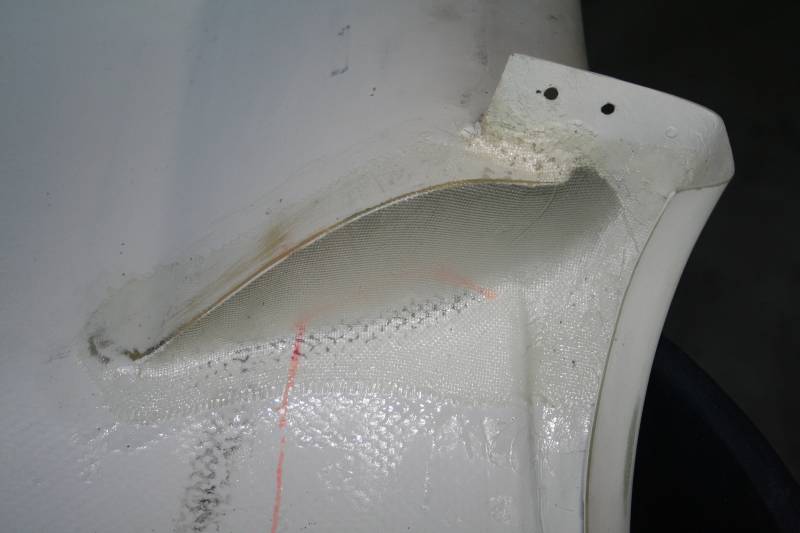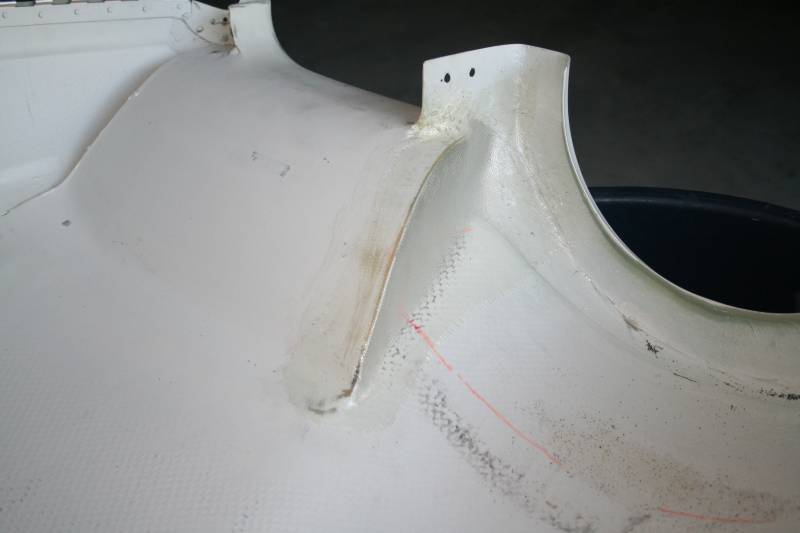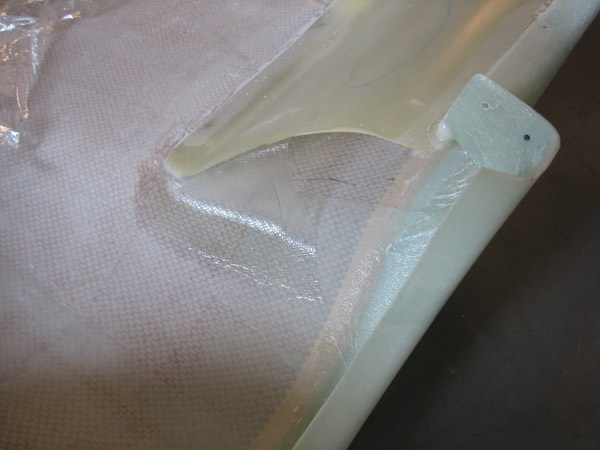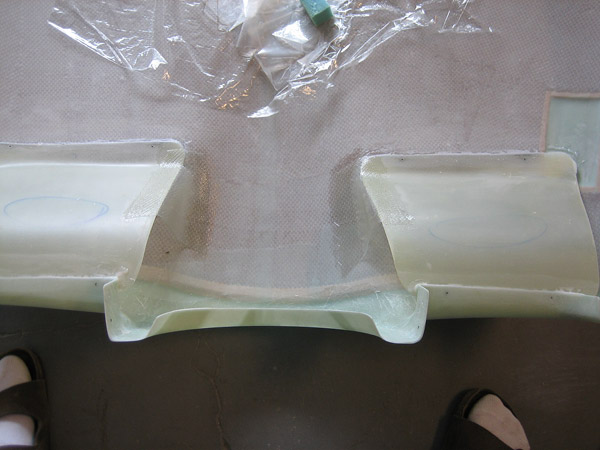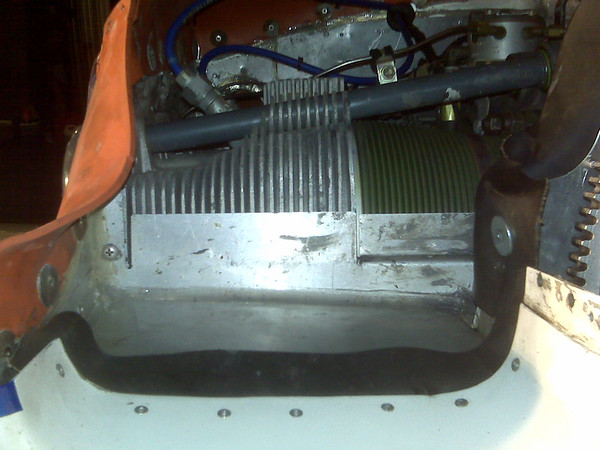walter
Well Known Member
After examining, again, thoroughly, my baffles to make sure they were not
the cause of my high CHTs I found part of the problem, yep, the baffles,
well sort of.
Last weekend, after I pulled my p-mags (that's another story for a different
thread), I gave the top cowl a good lookover. I noticed something strange.
Picture in your mind the cowl inlet "ramp" which gets epoxied to the top cowl.
On the outboard section of the ramp, it's quite easy to get a nice tight fit
with the baffling material (I use the red silicone stuff).
On the inboard side of the ramp it's a bit more difficult as you have to
transition the baffling material from vertical to horizontal as it comes from the
baffle behind the spinner to the inlet.
I stuck my hand way up in there and found that I had a section which was
not covered by the baffles. The hole was big enough to stick 3 of my fat
fingers in, on each ramp. The real problem is that the air passing
through that hole was going right under the ramp, between the ramp and
the top cowl, out to the other side of the ramp and dumping into the low
pressure area of the cowl outboard of the nice sealing outboard baffle.
I brought the top cowl home and glassed in both sides of each ramp so that
there was no way for air to pass under the ramp. Doing this also made the
inboard baffle fit much better.
Prior to this modification I could easily see 450+ in a 300fpm climb, way to hot
and it was seriously limiting my flying.
Today I flew with the modified top cowl. I could not get the CHT hotter
than 404 degrees, and this was during a very very hot day (90+ degrees)
climbing at 1500 fpm, full power.
I'll call that success. Now I'm going to play a bit with exit area and see what
effect that has. I suspect there may be more go gain, especially on the
nose draggers.
If you have high CHT temps, do you have the sides of the ramps glassed in?
It would be interesting to know if that is a common issue. I don't recall
seeing in the plans whether they should be glassed in or not, and I don't have
the plans handy.
Anyway, I'm happy. My hours are flown off (finally) and the plane is now at
her new home at KCPM.
the cause of my high CHTs I found part of the problem, yep, the baffles,
well sort of.
Last weekend, after I pulled my p-mags (that's another story for a different
thread), I gave the top cowl a good lookover. I noticed something strange.
Picture in your mind the cowl inlet "ramp" which gets epoxied to the top cowl.
On the outboard section of the ramp, it's quite easy to get a nice tight fit
with the baffling material (I use the red silicone stuff).
On the inboard side of the ramp it's a bit more difficult as you have to
transition the baffling material from vertical to horizontal as it comes from the
baffle behind the spinner to the inlet.
I stuck my hand way up in there and found that I had a section which was
not covered by the baffles. The hole was big enough to stick 3 of my fat
fingers in, on each ramp. The real problem is that the air passing
through that hole was going right under the ramp, between the ramp and
the top cowl, out to the other side of the ramp and dumping into the low
pressure area of the cowl outboard of the nice sealing outboard baffle.
I brought the top cowl home and glassed in both sides of each ramp so that
there was no way for air to pass under the ramp. Doing this also made the
inboard baffle fit much better.
Prior to this modification I could easily see 450+ in a 300fpm climb, way to hot
and it was seriously limiting my flying.
Today I flew with the modified top cowl. I could not get the CHT hotter
than 404 degrees, and this was during a very very hot day (90+ degrees)
climbing at 1500 fpm, full power.
I'll call that success. Now I'm going to play a bit with exit area and see what
effect that has. I suspect there may be more go gain, especially on the
nose draggers.
If you have high CHT temps, do you have the sides of the ramps glassed in?
It would be interesting to know if that is a common issue. I don't recall
seeing in the plans whether they should be glassed in or not, and I don't have
the plans handy.
Anyway, I'm happy. My hours are flown off (finally) and the plane is now at
her new home at KCPM.





